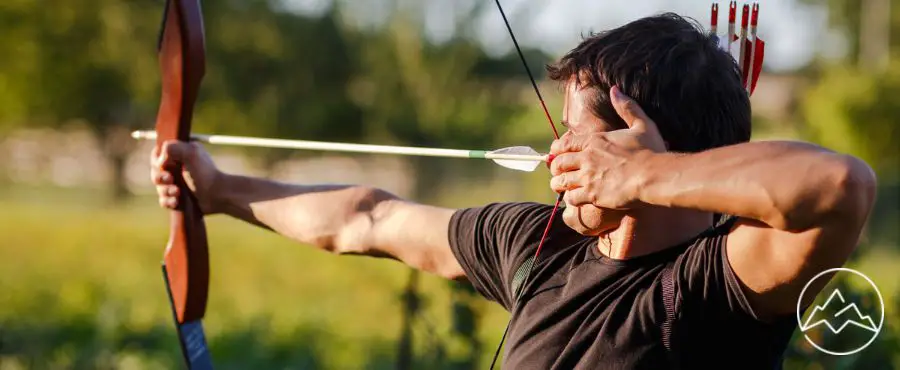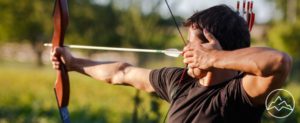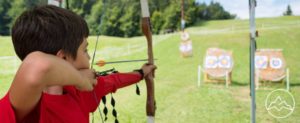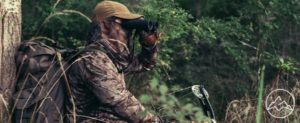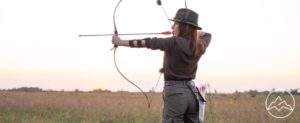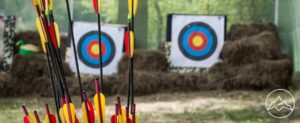In the realm of archery, achieving precision and accuracy in arrow flight is of utmost importance. To this end, archers employ a technique known as bare shaft tuning, a process that aims to master the flight path of arrows. Comparable to navigating a treacherous path with unwavering focus, bare shaft tuning serves as a compass for archers to enhance their skill and achieve consistent results. This technique involves shooting both fletched and unfletched arrows to discern any irregularities in arrow spine or nocking point, thus allowing adjustments to be made accordingly. By selecting arrows that align with their draw length and draw weight, archers can evade complications such as fletching ripping off upon release. With its ability to match the bow with the arrows, bare shaft tuning holds the key to unlocking enhanced consistency and accuracy. This article delves into the intricacies of bare shaft tuning, outlining its process, benefits, and the advantages it offers to those who choose to join the archery community.
Key Takeaways
- Bare shaft tuning is a method used to fine-tune a bow and improve arrow flight.
- It involves shooting both fletched and unfletched arrows to compare their impact and identify issues with arrow spine and nocking point.
- Correct arrow spine is crucial to avoid erratic arrow flight, and referencing an arrow spine chart is important to avoid incorrect guidance from archery shops.
- Bare shaft tuning is a must-do process for all archers as it improves consistency and accuracy.
What is it?
Bare shaft tuning is a method used by top archers to fine-tune their bows and improve arrow flight, allowing them to observe the true flight path of the arrow and make necessary adjustments. This process involves selecting the appropriate arrow spine based on draw length and draw weight. Arrow spine selection is crucial to ensure that the arrow flexes properly upon release, avoiding erratic flight. During bare shaft tuning, the archer shoots both fletched and unfletched arrows to compare their impact. Common issues that may arise during this process include a too-stiff arrow hitting the rest or riser upon release, causing the fletching to rip off. Understanding the importance of proper arrow selection and making necessary adjustments is key in achieving optimal arrow flight and accuracy.
Process and Benefits
The process of fine-tuning a bow to improve arrow trajectory and achieve greater accuracy and consistency involves comparing the impact of fletched and unfletched arrows, making adjustments to the arrow spine and nocking point, and repeating the process at different distances. Benefits of bare shaft tuning include better arrow flight, increased accuracy, and improved consistency. It allows archers to identify and address issues with arrow spine stiffness and the position of the nocking point. By shooting both fletched and unfletched arrows, archers can determine if adjustments are needed to optimize arrow flight. However, bare shaft tuning also presents challenges. It requires choosing the right arrows based on draw length and draw weight, and incorrect guidance from archery shops can lead to issues. Additionally, shooting with fingers or a mechanical release can affect arrow flexion and clearance, making it crucial to find the correct arrow spine for consistent and accurate shooting.
Joining the community
Joining the archery community not only provides valuable membership benefits and access to exclusive content, but it also offers a sense of belonging and the opportunity to connect with fellow archers who share a passion for the sport. Being a part of this community allows archers to stay updated with the latest developments and advancements in the field of archery. Members gain access to exclusive content such as tutorials, training videos, and expert advice, which can greatly enhance their skills and knowledge. Additionally, the community serves as a platform for archers to engage in discussions, share their experiences, and seek guidance from experienced individuals. This sense of camaraderie and support can be invaluable for beginners and seasoned archers alike. By joining the archery community, archers can further their passion for the sport and continue to improve their skills through the wealth of resources and connections available to them.
Frequently Asked Questions
What are the common mistakes to avoid during the bare shaft tuning process?
Common mistakes to avoid during the bare shaft tuning process include: 1) choosing the wrong arrow spine for the draw length and draw weight, resulting in erratic arrow flight, 2) allowing the arrow to hit the rest or riser upon release, causing fletching to rip off, 3) neglecting to consult an arrow spine chart and relying solely on guidance from archery shops, which may be incorrect. Tips and tricks for successful bare shaft tuning involve carefully selecting the right arrow spine and making necessary adjustments to improve arrow flight and accuracy.
How often should bare shaft tuning be performed to maintain optimal arrow flight?
Bare shaft tuning should be performed regularly to maintain optimal arrow flight. While there is no exact frequency that applies to all archers, it is recommended to perform bare shaft tuning whenever changes are made to the arrow spine or tuning techniques. This ensures that the bow is properly matched with the arrows, minimizing erratic arrow flight. Regular tuning also helps maintain consistency and accuracy, improving overall performance. By regularly assessing and adjusting arrow flight, archers can achieve precision in their shooting.
Can bare shaft tuning be done at home or is professional assistance recommended?
Bare shaft tuning can be done at home without professional assistance. It offers several benefits for improving accuracy. To perform bare shaft tuning, start by selecting the right arrows based on draw length and draw weight. Remove the fletching from the arrows and shoot both fletched and unfletched arrows. Compare the impact of both arrows to identify issues with arrow spine and nocking point. Make adjustments to improve arrow flight. Repeat the process at different distances for accuracy.
Are there any safety precautions to consider while performing bare shaft tuning?
Arrow flight safety is of utmost importance when performing bare shaft tuning. It is crucial to ensure the use of proper equipment to prevent any potential accidents or injuries. This includes wearing appropriate protective gear such as finger tabs or release aids to minimize the risk of finger or hand injuries. Additionally, it is important to have a safe shooting range with proper backstops and targets to avoid any unintended damage or harm. Following these safety precautions will help ensure a safe and successful bare shaft tuning process.
How does weather or environmental conditions impact the results of bare shaft tuning?
When considering the impact of weather or environmental conditions on bare shaft tuning, it is important to understand the role of fletching in this process. Fletching plays a vital role in stabilizing the arrow and correcting its flight. However, during bare shaft tuning, the fletching is intentionally removed to observe the true flight path. Therefore, weather conditions such as wind can have a significant impact on the flight of the unfletched arrow. To minimize this impact, archers can employ techniques such as shooting in sheltered areas or using wind flags to gauge wind direction and adjust accordingly.
Conclusion
Bare shaft tuning is a crucial technique used by archers to improve the flight path of their arrows, ensuring greater accuracy and consistency. This process involves shooting both fletched and unfletched arrows to compare their impact and identify any issues with arrow spine or nocking point. By making necessary adjustments, such as selecting the right arrows based on draw length and weight, archers can enhance arrow flight. This technique is vital for achieving precision in archery. For example, a case study showed that after bare shaft tuning, an archer’s arrows consistently hit the target’s bullseye, resulting in improved performance and confidence.

